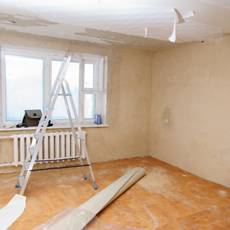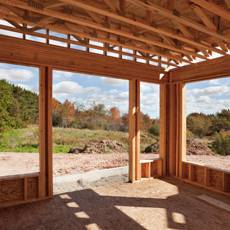Adding to your home can become pricey. Gather ideas for room additions funding.
Find your room additions funding today. Adding a room to your home is a tried and true method of increasing its value. No matter whether you're adding a bedroom or a bathroom to your home, the addition can be a costly one. Room additions funding is often necessary.

Unless you use savings, home improvement financing is generally obtained in one of three ways:
- A cash out refinancing program with your current lender
- An equity loan
- A construction loan
Knowing the differences between the three financing choices can help you make an informed decision about which method to use.
 1. Cash out refinancing
1. Cash out refinancing
Before you make that first call to a contractor to set up a date for the room additions, funding sources should be looked into. The first source you should consider is cash out refinancing directly from the equity that you've already built up in your home.
Cash out refinancing is a deal conducted with your mortgage holder that liquidates a portion of your home equity to provide cash that you can use for constructing your room additions.
A negative to refinancing in this way is that it directly reduces the equity that you have, increasing the mortgage length on the home
2. Home improvement loan
 The second financing option you should look into for the room additions is funding made through a home improvement loan, which is a personal loan that is generally made with the home put up as collateral against the loan amount.
The second financing option you should look into for the room additions is funding made through a home improvement loan, which is a personal loan that is generally made with the home put up as collateral against the loan amount.
Other collateral can be used instead, but you will always be limited on the loan amount by the amount of collateral that you put on the line for the financing. Generally, you'll only pay interest on the loan during the agreed upon construction period.
After the agreed upon period ends, you'll then have higher payments that include the principal amount as well as the interest.
An advantage to a home improvement loan is that the loan can be based on the future value of the home after the improvement is completed.
3. Home equity loan
 The third method for room additions funding is to use home equity loans. Like cash out refinancing, home equity loans rely on the equity that you've already built up in the home. Unlike cash out refinancing, a home equity loan does not liquidate the equity. Instead, the equity loan uses your equity as collateral for the loan.
The third method for room additions funding is to use home equity loans. Like cash out refinancing, home equity loans rely on the equity that you've already built up in the home. Unlike cash out refinancing, a home equity loan does not liquidate the equity. Instead, the equity loan uses your equity as collateral for the loan.
The amount of the loan is limited by the equity present in the home and is further reduced slightly to allow for depressions in the home markets that may reduce the home's value. For example, with $100,000 in equity, the equity loan amount offered may only be $80,000 to allow for a drop in the home's price.
Potential bonus: residential tax credits
In addition to the three primary financing options, residential tax credits may also be available to aid you with room additions funding. Check with contractors for project estimates and if they know of any area tax credits. Regardless of the financing used, an addition will add to the value of your home at resale.













Write a Comment